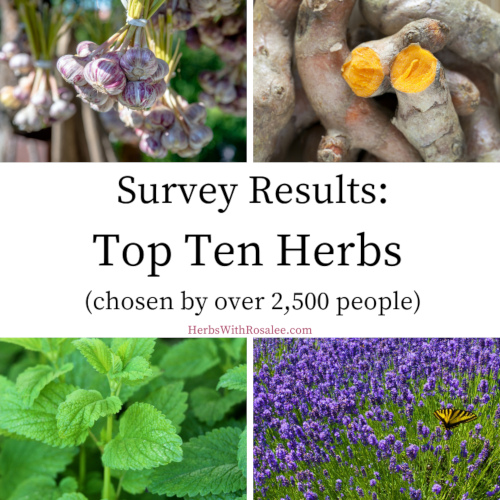Get weekly tips, recipes, and my Herbal Jumpstart e-course! Sign up for free today.
Most Used Herbs
Share this! |
|
In September of 2020 I reached out to the herbal community to ask a simple question.
What are your 10 most used herbs?
For many folks (myself
included), this was a deceptively simple question! Narrowing down herbs
to a measly 10 is a difficult task! From the thousands of people who
took the survey I easily heard from 200 of them who struggled to limit
it to 10.
Nonetheless, we had almost 3,000 people respond to the survey! I am grateful so many took the time to answer!
The
other feedback I received from survey participants was that they would
choose different herbs for food than for medicine. A future survey could
be done to separate out those choices. However, even now I can see the
difficult choices that have to be made… is ginger a food? Or is it
medicine?
The following article lists the top ten most used herbs plus a short summary for each.
If you have followed me, even for a short while, you know I love to inspire people to bring herbs into their daily lives.
Simple
kitchen recipes and DIY remedies are my favorite way to share about
herbs! With that in mind I also made a free e-book that includes recipes
for these herbs (for example, golden milk ice cream and stinging nettle
cake!).
The e-book also includes the full survey results.
You can download it for free when you join my herbal community by signing up for my weekly newsletter below.
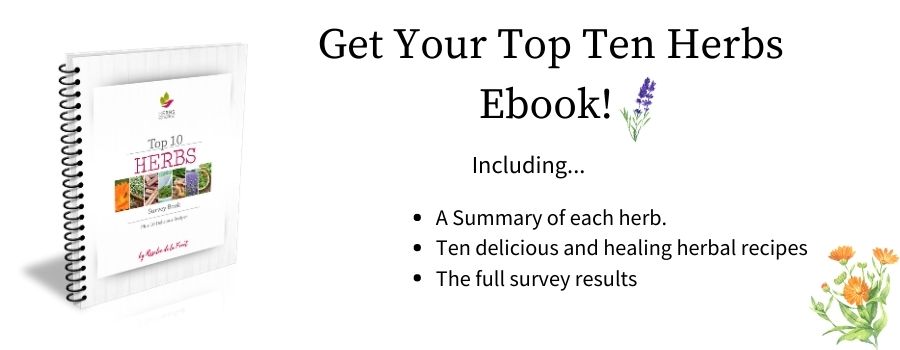
The following results are meant to be fun and entertaining. I am not a professional survey designer and my reach in the herbal world is limited. A differently designed survey with even further reach may very well yield different results. In other words, I offer these not to make any firm conclusions or claims, but simply to share what 3,000 responders chose as their most used herbs.
If you enjoy seeing these survey results, let me know in the comments at
the end of this article. If it's popular then I'll do more. Favorite
herbs for tea? Most used herbs for medicine? Have other ideas? Drop
those in the comments as well.
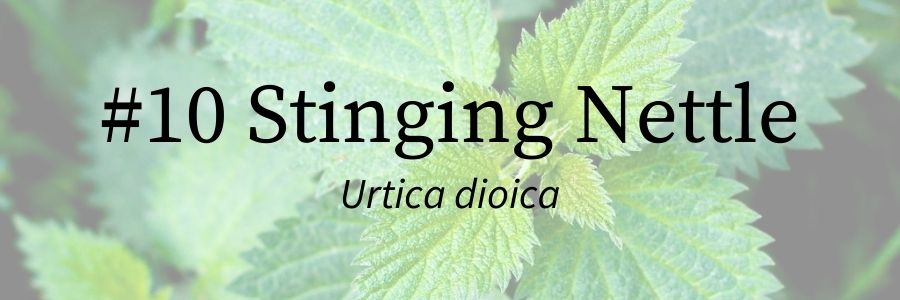
Nettle (Urtica dioica) is a somewhat plain-looking plant, but if you happen to brush by it growing along the trail it will jump out and demand your attention. Stinging nettle is protected by needle-like projections that easily inject irritating substances into the skin. As a result, many people are introduced to it in an abrupt and often uncomfortable way. However, once you get to know this powerful herb, it’s easy to fall in love with it.
Herbalists use nettle both as a highly nourishing food and as medicine. It’s used for reproductive health, to restore energy levels, to detoxify the body (by supporting elimination organs), to relieve allergies, and to strengthen bones, hair, nails and teeth. It might be easier to discuss what nettle doesn’t do!
Nettle is commonly used to decrease seasonal allergic responses, such as hay fever. While the exact mechanism of how this works is unknown, some hypothesize that nettle’s natural histamine content may down-regulate the allergic response. Nettle has also been shown to decrease inflammatory markers, such as C-reactive protein, which could also play a role in relieving seasonal allergies. The astringent action of nettle also contributes to the action of reducing a runny nose.
Stinging nettle can be eaten freely as food but it needs to be properly prepared. Harvest the leaves while the plant is young and before it flowers. Most people prefer to harvest using gloves to avoid being stung. If you harvest the top portion of the plant, leaving behind bottom leaves, it will grow back even denser. In cooler climates, it’s possible to tend a nettle patch and keep harvesting the leaves well into summer. Once harvested, blanch the leaves in boiling water for two minutes before using them as you would any cooked green. Nettle soup, lasagna, stir-fried greens, spanakopita, green smoothies, and pesto are just a few examples. (See the Stinging Nettle Cake Recipe in the e-book.)
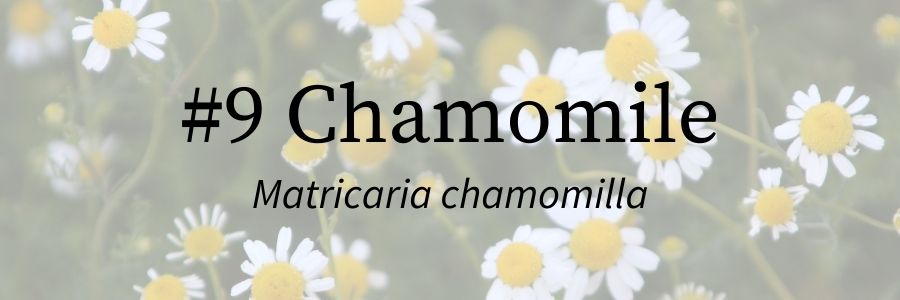
For many years I basically ignored chamomile. Sure, I thought it was great for children or a nice tasting after-dinner drink, but when it came to serious herbal medicine, one would obviously look beyond chamomile.
Not only was I completely wrong about chamomile – it has become one of my favorite and most used herbs – but I’ve since realized that I needed to learn the best ways to use chamomile and to take the advice of my friend and herbalist jim mcdonald, who points out, “gentle does not mean weak.”
Chamomile is not only gentle and powerful, it seemingly does a thousand and one different things, from soothing the nervous system, relieving muscle tension and addressing cold and flu symptoms, to promoting digestion and modulating inflammation.
Drinking a strong cup of chamomile tea is like getting a warm and reassuring embrace from a loved one. About halfway through a cup of chamomile tea, I notice my shoulders relaxing, my breath deepening, and my entire body unwinding. Move over apples; in today’s stress-filled world, a cup of chamomile tea a day could be what keeps the doctor away.
For centuries herbalists have used chamomile to soothe the nervous system of both children and adults. A common saying is that chamomile is indicated for whining children or adults acting like whining children. It can also be taken at night to promote sleep.
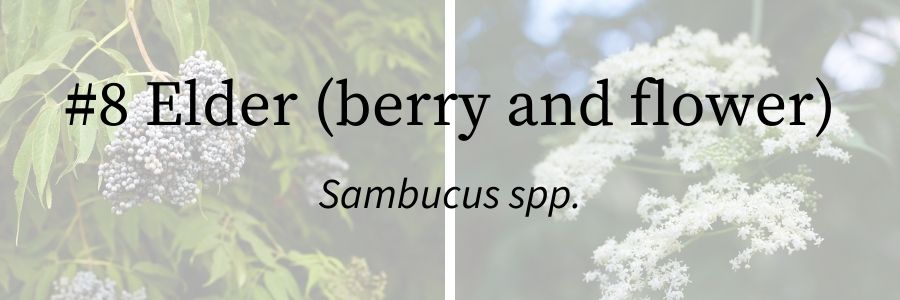
Elderflower has many uses, but it particularly shines in two areas: for fever and to promote healthy skin. While that may seem an odd pairing, it’s not uncommon that herbs acting as relaxing diaphoretics also support the physiological functions of skin health.
While elderflower is most commonly used for fever, it also offers many benefits for the skin. One mechanism of this action could be elderflower’s effects on the “periphery” of the body. Because a warm elderflower tea promotes diaphoresis or sweating, this action moves stagnancy and can be a gentle form of natural detoxification for the skin. Elderflower historically was often used as an external preparation as a tea wash or infused in oil for a cream or salve.
Like the flowers, elderberry has myriad medicinal uses. Elderberry is renowned for its ability to prevent upper respiratory infections, as well as to shorten the duration of a cold or influenza. Using elderberry this way has stood the test of time, as many historical books record this use and modern-day herbalists continue this tradition.
The flavonoid-rich berries of elder are anti-inflammatory in nature and have been historically used to decrease arthritic or rheumatic pain, as well as for strengthening the eyes.
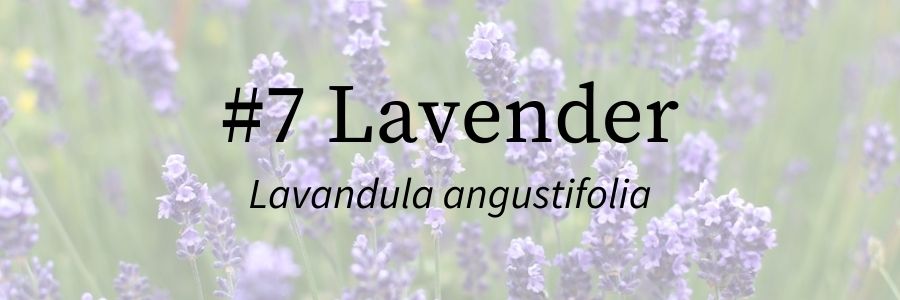
Lavender’s delightful scent and beautiful blooming spikes have made it a favorite herb for centuries. Wild lavender grows throughout the Mediterranean and northeast Africa, while garden varieties are found all over the world. Lavender is cherished for its scent, being widely used in perfumes, beauty products, disinfectants, and household cleaners. Herbalists and aromatherapists rely on it for everything, from relieving stress and promoting sleep to healing wounds and encouraging healthy digestion.
Lavender’s lovely scent is a balm to a stressed-out mind. Simply smelling the lavender plant or essential oil soothes anxiety and decreases stress. Herbalists have long recommended lavender pillows and sachets as a bedtime aid to promote deeper sleep.
Lavender has many actions that make it a wonderful herb to consider for wounds, infections, and bug bites. It can promote the healing of wounds and is antiseptic and antimicrobial, helping to address infection while also decreasing pain.
While not often thought of for digestion, lavender proves to be a wonderful culinary and medicinal herb to promote digestion. It’s slightly warming and aromatic, making it a lovely carminative herb. It can be enjoyed in food, as a tea, or even added to bitters blends.
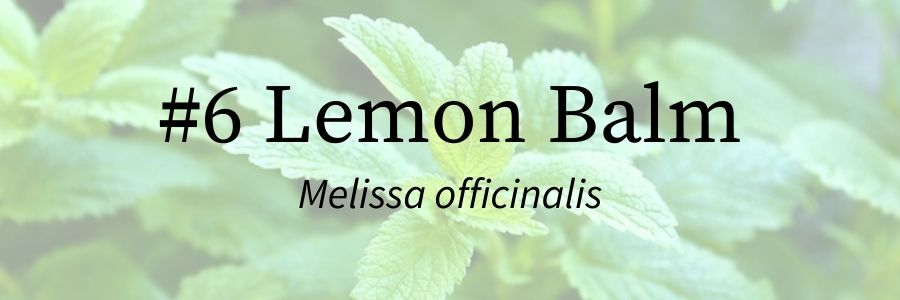
Calming and delicious, lemon balm spreads its cheer just as it spreads its rhizomes … far and wide! Named for its lemony aroma/flavor and its ability to heal and soothe (the definition of balm), this unique mint family member is one of my most used herbs.
Lemon balm is deliciously calming. Classified as a relaxing nervine, it is called upon for many hypersensitive nervous system issues, ranging from stress to insomnia. I often like to combine it with chamomile (Matricaria chamomilla) and/or passionflower (Passiflora incarnata).
As a mild antispasmodic, lemon balm can help relieve tension headaches and other mild pain due to muscle tension. As an aromatic and carminative herb, it can relieve stagnant digestion, ease abdominal cramping, and promote healthy digestion. It’s a wonderful cup of tea to enjoy after meals.
Lemon balm also has antiviral properties. Herbalists regularly reach for it for viral infections such as upper respiratory infections. Several clinical trials have studied lemon balm’s ability to address outbreaks of herpes simplex, the virus that causes cold sores on the lips and genitals.
There is some concern that lemon balm may inhibit thyroid function, although this does remain controversial. If you have an underactive thyroid, avoid consuming this plant in excess without first speaking to an herbal practitioner.
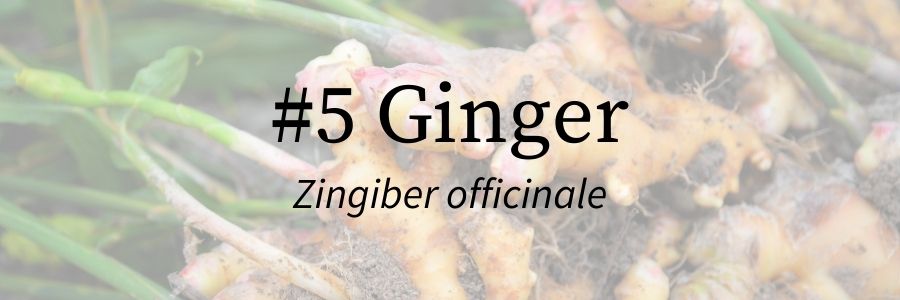
It probably won’t surprise you that Ayurveda calls ginger the “universal medicine.” It has been used for centuries and is still one of the most popular herbs of our time. It has been widely studied with positive results for a variety of issues, making it one of the more accepted herbs in Western medicine.
Here’s a glimpse at ginger’s many gifts…
Ginger relieves pain through its anti-inflammatory actions, blood-dispersing actions, and by relieving pain caused by coldness. It can also relieve the cramping pain experienced with diarrhea or with menstrual cramps.
Ginger can be used for many different complaints during an upper respiratory system infection such as a sore throat, fever with chills and congestion. In fact, if you only had one herb to choose from during a cold or the flu, ginger may be the one, especially when there are signs of coldness and dampness.
Ginger is famously used for all kinds of nausea. It is used in small amounts for nausea during pregnancy and used freely for nausea caused by motion sickness. I keep candied ginger in the car for passengers who made need it on our winding rural back roads. Ginger is also used to decrease nausea after chemotherapy and surgeries.
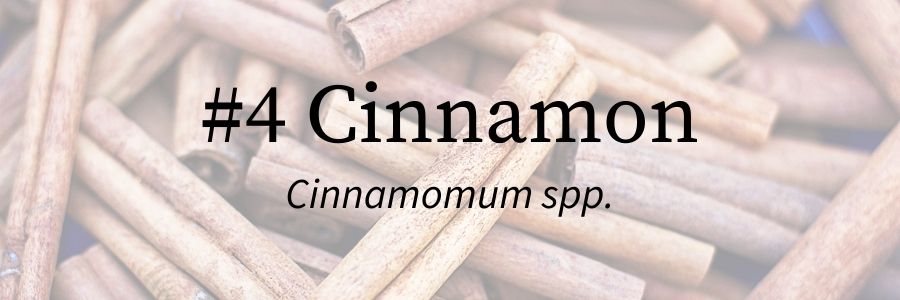
Cinnamon is one of the most popular and loved spices in the world. We relish it on everything from pastries to chocolate, to vegetables and meat, as a flavoring in candies, gums and toothpastes, and as an effective and reliable herbal medicine. It’s amazing to think of all the ways we benefit from the bark of this tropical tree!
Although we are most familiar with cinnamon as a culinary spice for apples and pastries, cinnamon has a long list of medicinal attributes.
Its pleasing, spicy, aromatic, and sweet taste and warming attributes can ease digestive woes by increasing circulation and moving along stagnant digestion. This makes it useful for a variety of digestive complaints including indigestion, gas, and cramping.
Numerous clinical studies have shown that cinnamon can dramatically benefit people with type 2 diabetes and insulin resistance. Its benefits include lowering fasting blood glucose, lowering HbA1c (a marker that shows average blood glucose levels over time), and lowering blood pressure and cholesterol levels.
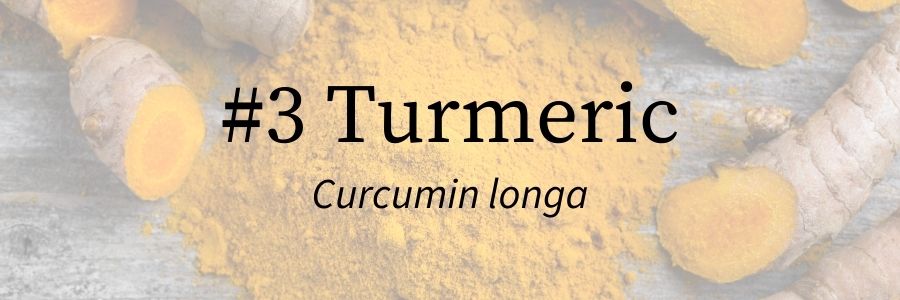
Turmeric wasn’t just popular in this survey; it’s arguably one of the most popular herbs of our time. In fact, Google reported that turmeric was one of the most popular searched-for food terms from 2014-2016. It’s not surprise that turmeric is winning popularity contests as it seemingly can be used for so many conditions. Herbalists regularly work with turmeric for issues like imbalanced cholesterol, liver stagnation, digestive issues, poor skin health, type 2 diabetes, ulcers, cognitive health and more.
Looking at this list of the many ways we use turmeric for health, it may seem a bit unbelievable. How can one herb do so much?
It may be due to turmeric’s incredible ability to modulate inflammation. Inflammation plays a significant role in cancer, type 2 diabetes, autoimmune disorders, asthma, arthritis, ulcerative colitis, periodontitis, eczema, psoriasis, and many other ailments. In fact, many of the major diseases plaguing the Western world can be linked to chronic systemic inflammation.
Turmeric is drying in nature. People regularly using turmeric or those taking it in higher amounts may notice that they feel unusually thirsty or that they have dry eyes or dry skin. If this happens to you, then I recommend taking less. Or, you can also increase healthy fats and liquids in your diet to see if that helps to balance things out.
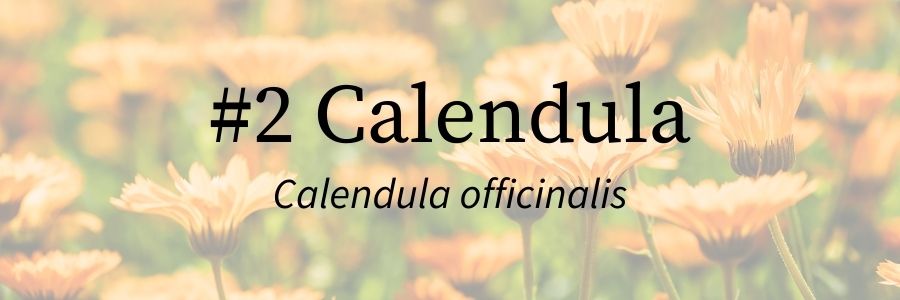
Calendula is a common garden flower in the Aster family that now grows in temperate climates all over the world. It generously blooms in bright orange and yellow blossoms throughout the summer and often reseeds itself, returning again every year. Besides offering beauty wherever it grows, calendula has been used for thousands of years for myriad medicinal applications.
Calendula is many herbalists’ first choice for any number of skin issues, whether it is healing wounds, soothing rashes, or simply promoting healthy skin. It is also helpful in healing the “internal skin,” or mucous membranes. In addition to being a skin-healing wonder, calendula stimulates the immune and lymphatic systems, supports liver health, and is antimicrobial. It’s a delight to grow, fun to harvest, and can be made into a multitude of herbal potions, from teas and tinctures to creams and salves. This is a beautiful and useful herb to nurture and enjoy.
If you can grow your own calendula, do it! It is easy to grow and even does well in containers. Having calendula around is a delight! The bright sunny blooms are beautiful and easy to harvest. Your freshly harvested calendula will be much stronger than anything you buy dried. If stored well, dried calendula is best used within 6 months to a year.
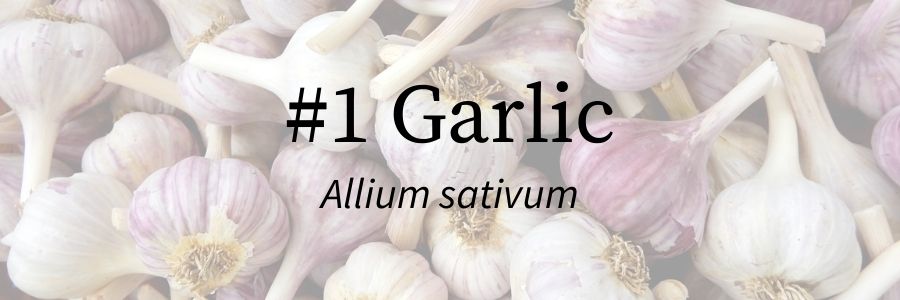
For thousands of years people have relied on garlic to keep infections at bay, increase energy, support the heart, and flavor their food. Humans have been cultivating garlic for so long that we aren’t even entirely sure where and when the first cultivation practices began. Perhaps Asia or ancient Persia? Sumerian clay tablets written almost 5,000 years ago reference the medicinal and edible properties of garlic and we know that it was used as medicine in ancient Egypt and Greece.
Garlic is an amazing herb that adds evocative flavor to your food while also providing many medicinal gifts. Herbalists commonly use garlic for symptoms of upper respiratory infections, as a general antimicrobial, and to support both heart health and digestion. And the best part is that fresh garlic can be readily found at your local grocery store or farmer’s market. It’s also really easy to grow in temperate climates.
Garlic is potently pungent and spicy. If you are unaccustomed to eating it raw, simply chewing one little clove can be a very intense experience. The taste and aromatics fill not only your mouth, but also your sinuses. When used this way there’s no denying that garlic has a powerful effect. Because garlic is so hot, spicy, and pungent, it is best used for cold and stagnant conditions. In this way, its hot and stimulating nature can warm things up and move stagnation along.
Would you like to see more surveys like this?
If so, let me know in the comments below.


Rosalee is an herbalist and author of the bestselling book Alchemy of Herbs: Transform Everyday Ingredients Into Foods & Remedies That Healand co-author of the bestselling book Wild Remedies: How to Forage Healing Foods and Craft Your Own Herbal Medicine. She's a registered herbalist with the American Herbalist Guild and has taught thousands of students through her online courses. Read about how Rosalee went from having a terminal illness to being a bestselling author in her full story here.
